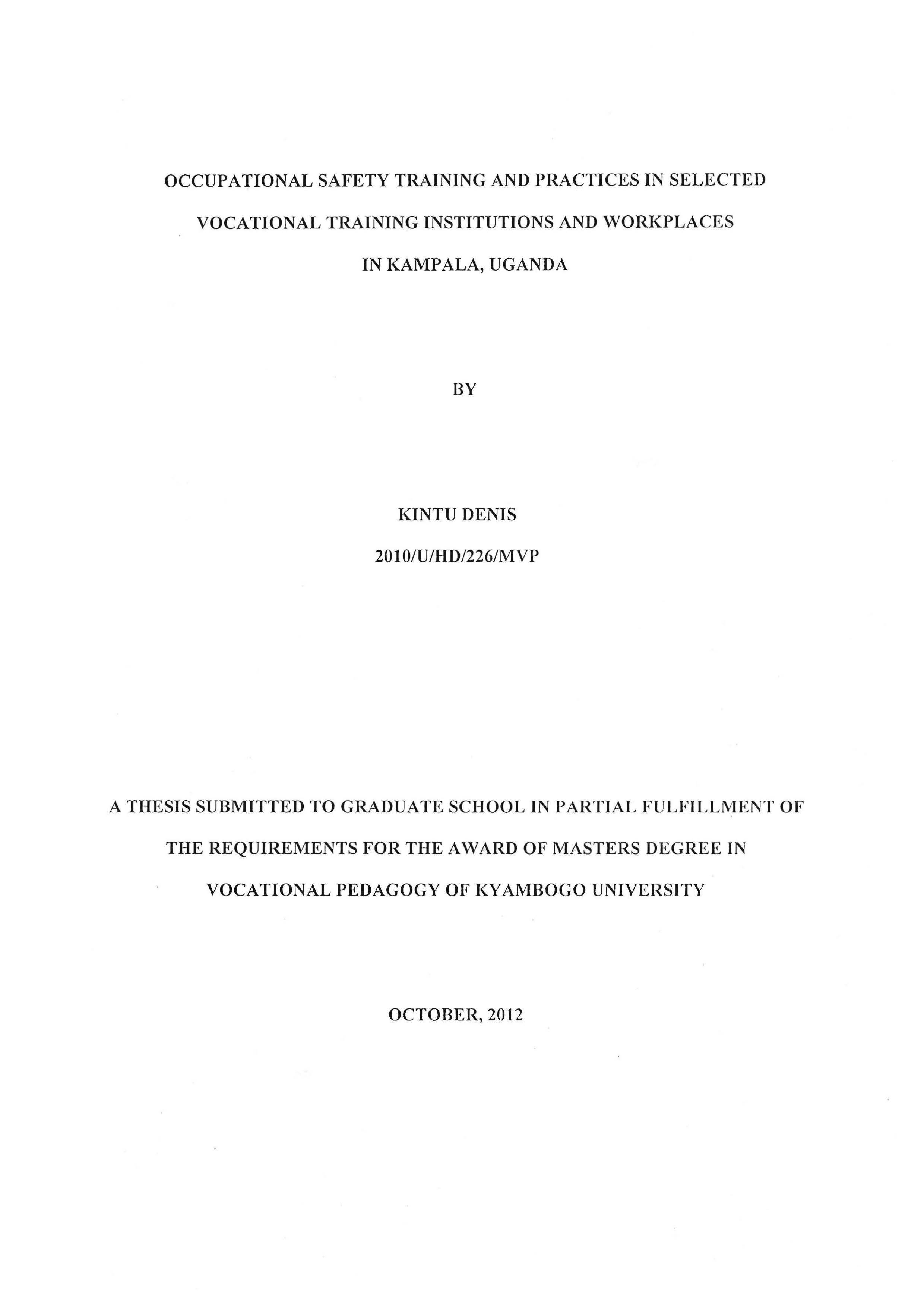Occupational safety training and practices in selected vocational training institutions and workplaces in Kampala, Uganda
Abstract
There have been several cases of industrial accidents in Uganda, some of them fatal. It is
possible that there could be a training gap in both vocational training institutions and
workplaces. This study set out to investigate how occupational safety training 111
vocational training institutions and workplaces is implemented to promote safety at
work. The objectives of the study were to: examine how occupational safety training is carried
out in vocational training institutions; establish how occupational safety training is carried out
and practiced in workplaces; and to identify constraints to occupational safety training in both
vocational training institutions and workplaces. A descriptive study design was used. Five
vocational training institutions and workplaces were randomly selected for the study which
involved instructors, workshop technicians, students, workshop managers, production
supervisors, machine operators, and newly recruited technicians. In total 35 respondents. Data
was collected using interviews, observations and documentary analysis methods. The
instruments were pre-tested and the necessary adjustments made to improve the validity and
reliability. The researcher established that in vocational training institutions, all courses have a
component of safety in the curriculum but not much is practiced in the institution workshops.
Also the vocational training institutions have inadequate industrial attachment programmes for
both staff and students. In the workplaces no specific training content was being used and
majority of the respondents felt that they are not regularly consulted by the vocational
institutions on safety skills requirements in industry, which results into a miss-match in safety
skills training. The major constraints to safety training include: inadequate funds to purchase
safety equipment; and insufficient literature on safety. It was recommended that government
should implement occupational health and safety at all levels of training, hence leading to an inbuilt
safety culture in future workers; increase funding for vocational training institutions to
enable them acquire safety training equipment; vocational training institutions should vigorously
promote industrial attachment programmes for both staff and students; and the workplaces
should increase occupational safety awareness programmes through sustainable training and
information activities for all the workers.

